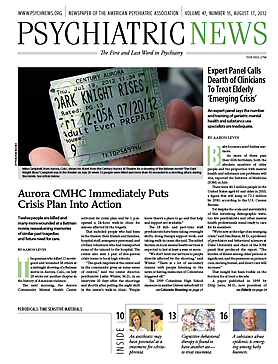“Healthy” and “normal” are relative concepts when thinking about the brain as it ages, said speakers at panel sponsored by the American Association for the Advancement of Science and the Dana Foundation in Washington, D.C., in June.
“All data suggest significant changes in the brain with age,” said Marilyn Albert, Ph.D., a professor of neurology and director of the Division of Cognitive Neuroscience in the Department of Neurology at Johns Hopkins School of Medicine and director of its Alzheimer’s Disease Research Center.
And “changes” means decline. Regression by a number of measurements happens in normal people, but occurs sooner and on a steeper downward curve among those who later develop dementia, she said.
Studying “optimally healthy” people over time reveals that decline starts in middle age, with steady regression through the 50s, 60s, and 70s, said Albert.
Predictors of decline include levels of physical activity, mental activity, social engagement, and vascular risk factors. Those risk factors include high blood pressure, diabetes, cholesterol, smoking, and weight gain. Those conditions cause small- and large-artery disease, disrupt the blood-brain barrier, and initiate inflammatory and oxidative stress, she pointed out.
Prevalence of Alzheimer’s disease is 3 percent among those aged 65 to 74, 19 percent for those aged 75 to 84, and 47 percent for people aged 85 and over, said panelist Richard Hodes, M.D., director of the National Institute on Aging. With the United States’ rapidly aging population, that projects to about 14 million people with the disorder by 2050.
Transnational studies indicate that countries with policies that encourage early retirement have greater declines in cognitive function among the elderly, possibly reflecting reduced physical and mental activity, said Hodes.
Looking into the brain’s biology, PET imaging shows that amyloid plaques and hyperphosphorylated tau tangles in people with mild cognitive impairment have a five-times greater chance of progressing to Alzheimer’s, said Reisa Sperling, M.D., an associate professor of neurology at Harvard Medical School and the director of the Center for Alzheimer Research at Brigham and Women’s Hospital.
“And even 32 percent of ‘normal’ subjects have significant amyloid plaque distribution in the frontal cortices,” she said.
New research shows that evidence of Alzheimer’s disease begins 10 to 20 years before dementia sets in. Discouraging as this might sound, Sperling saw it as good news because it raised the possibility that—someday— there will be a way to detect the disease in its early stages and then intervene to stop, delay, or reverse it.
“We need to move to treating people before irreversible brain loss occurs,” she said. If onset were delayed just five years, it would cut Medicare costs for these patients by 50 percent.
Early intervention to prevent, delay, or slow the progression of Alzheimer’s would be ideal, especially since 10 phase 3 treatment trials of once-promising medications over the last decade have proved “disappointing.” Data from several phase 3 trials are expected to be released this fall, and “even some evidence of hitting targets would be good,” she noted.
There are some interesting connections between Alzheimer’s disease and psychiatric disorders, noted Sperling in an interview with Psychiatric News.
For instance, depression has a complex relationship with Alzheimer’s. Late-onset depression is a warning sign, said Sperling. “But it’s not clear if Alzheimer’s is a risk factor for depression or if depression is an early symptom of Alzheimer’s,” she said.
“Depression is the most common psychiatric condition associated with dementia, and the usual antidepressant treatments don’t work as well for these patients,” added Hodes in an interview.
Sperling also speculated on parallels between Alzheimer’s and schizophrenia. Both have positive and negative symptoms. Hallucinations and delusions are not uncommon in both, and each is manifested in hippocampal and learning dysfunctions. In addition, schizophrenia appears in one (early) developmental stage in life, while Alzheimer’s arises in a later, “de-developmental” stage. Both represent failures in neural networks, she said.
The only protective factors against Alzheimer’s known so far appear to be increased physical activity or memory training, but more and larger randomized controlled trials are needed to confirm those effects, said Albert.
Simply recognizing cognitive decline isn’t enough, Hodes emphasized. The Affordable Care Act requires “detection of cognitive impairment,” but offers no help with which tests to employ, not to mention false positives, distressing diagnostic procedures, or what interventions (if any) are appropriate.
Interventions in cancer, stroke, HIV disease, diabetes, and osteoporosis now include preventive measures before symptoms appear. A similar approach should direct research into age-related brain changes. “We have to increase the quality and quantity of the evidence, but we can also act on what we know so far,” said Hodes.

